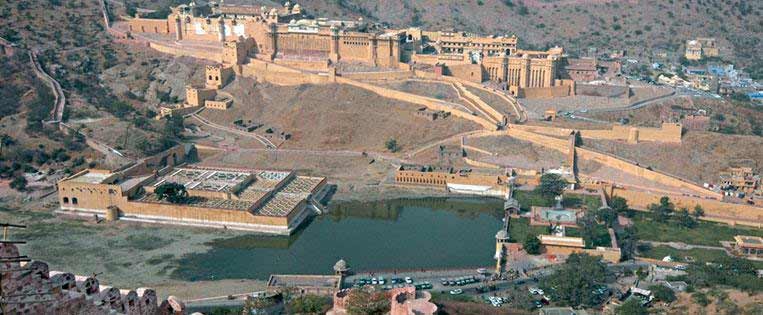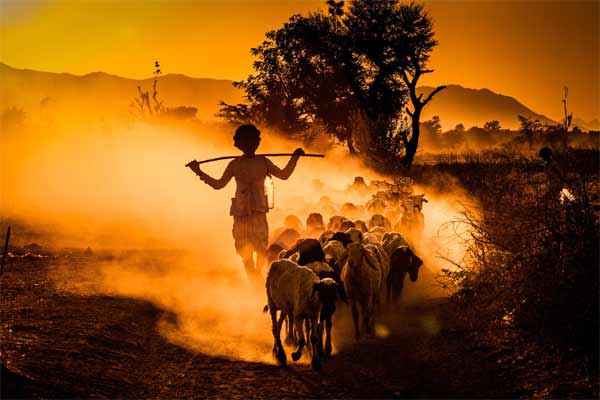History Rajasthan is some 5000 years old. Each historical monument such as forts, temples, etc. in Rajasthan tells us tales of various ancient Rajasthani period and emperors. It was ruled by Aryan, Mauryan and Gurjar empires in the ancient era, while the British dominated the medieval era of Rajputs, Mughals, and the modern era. Nearly every ruling empire promoted the Rajasthani art and culture, and contributed.
Rajasthan is a feudal state of India. Dubbed the ‘Land of Kings,’ its rich history can be traced back to the 2000 BCE Indus Valley Civilizations, with prehistoric settlement excavations in Bundi.
However, it is the Rajputs who are best known for Rajasthan. Beginning in the 9th century, this dynasty gave History Rajasthan its initial Rajputana name as well as its most prosperous era. The Rajputs were a community of different groups and clans that had come together to share a shared philosophy and tradition, associated with being a clan of warriors History of Rajasthan.
The two Rajput kingdoms standing out were the Mewar Sisodias whose capital was Chittorgarh (and later Udaipur), and the Marwar Rathores with Jodhpur as their capital. There were several more in the field, mostly battling one against another. Rajputs in Indian culture are associated with tales of chivalry, adventure, and flamboyance, as told by folk tales.
Yet the numerous Rajput clans gradually emerged as a cohesive power forming small kingdoms. They had been in almost constant conflict with the Mughals, with things coming to a head with Mughal Emperor Akbar in the 16th century. He had married a Princess of Rajput and formed alliances with some rulers, but the Sisodias and Rathores declined to acknowledge an allegiance. A war of 1526 saw Akbar seize Chittorgarh, whose reputation was maintained by the women of the city famously self-immolating.
The British East India Company in the 18th century convinced many of the Rajput states to join them, creating an independent state with the new name Rajasthan. The majority of the rulers were British Raj vassals who proclaimed the area as princely states. There were about 19 states that eventually merged into History of Rajasthan.
Ancient History
Rajasthan ‘s ancient history dates back to 5,000 years ago, when Jhunjhunu and Sikar live in the present day cities. Vedic seers began framing Vedic scriptures which are part of the present-day cornerstone of Sanatan dharma.
Hindu theme. History Rajasthan fragments may have been occupied by the civilisations of the Indus Valleys (Harappans). The current geographical location of Rajasthan has been triggered by the separate annexations and other expansionist attempts of many empires. This was also around 321-184 BCE a member of the Mauryan Empire History Rajasthan.
Geography of Rajasthan
Lying between 23°30′ and 30°11’North latitudes and 69° 29′ and 78 ° 17′ East longitudes in the northwestern part of India, Rajasthan is indeed one of the biggest states in the country. The state shares its north-western and western borders with the international Indo-Pakistan border reaching approximately 1,070 km and touching the major districts like Barmer, Ganganagar and Jaisalmer.
Rajasthan is squeezed to the west and northwest by Pakistan, north and northeast by the states of Punjab, Uttar Pradesh and Haryana. Madhya Pradesh state falls in the southeast, and southwest Gujrat district. The Tropic of Cancer crosses the district of Banswara through the southern point of the state. Rajasthan’s capital city is Jaipur also called the Pink City.
Rajasthan has an vast area of 3,42,239sq.km which constitutes 11 percent of India’s total geographic area. The diverse topography includes rocky hills, rolling sand dunes, wetlands, barren tracts or thorny scrubs, plains drained by rivers, plateaus, ravines and wooded areas. A major portion of Rajasthan State (about 70% of total land mass) is desiccated and includes the largest Indian desert, the Thar Desert known as the ‘Maru-kantar.’ This desert area includes the Jaisalmer, Barmer, Bikaner and Jodhpur districts.
Architecture of Rajasthan
Rajasthan ‘s history is demonstrated through its numerous forts , palaces and historic buildings. Almost every major city — and many minor ones — will need to explore some form of architectural wonder.
Temples
The temples of Rajasthan date back to the 4th century while from the 9th century more ornate and architecturally interesting temples began to develop. It usually featured sculptures and marble carvings, such as the magnificent Mount Abu Delwara comple.
Many notable temples include the Pushkar Brahma Temple, which is one of only a few dedicated to Brahma in India. The Hindu deity has been said to have been cursed with no places of worship on earth. Taking a holy dip into Lake Pushkar before offering your temple prayers.
Visit the Karni Mata temple in Bikaner, which houses over 20,000 black rats, for a change of pace. In the temple complex a statue is installed every time a rat dies.
Havelis
Havelis (mansions) were the houses of wealthy merchants and traders in the towns of Rajasthan. Decorated with stone carvings and murals and frescoes interiors, each merchant has tried to outdo the next to show their wealth and importance.
Every major city in Rajasthan will have havelis worth visiting, but Jaisalmer is a particular hotspot. Look out for the Patwon Ki haveli and the elephants of Nathmal Ki haveli.
There will be havelis worth visiting in every major city in Rajasthan, but Jaisalmer is a particular hotspot. Look out for the Patwon Ki haveli and the elephants of Nathmal Ki haveli.
Chattris and baoris
Built to commemorate the maharajas and nobles of the region, chattris (cenotaphs) is a frequent feature of architecture in Rajasthan. Chattri translates literally as an umbrella, referring to the dome-like structure which covers the cenotaph.
Location of the desert in Rajasthan means that water conservation has always been a major issue. The Baoris are usually built stepwells to provide drinking water. They became gathering places and temples with the passage of time, adorned with sculptures and carvings. A fine example is the 46 m deep Ranji Ki Baori in Bundi, showing Lord Vishnu’s carvings.
Hill forts and palaces
These vast complexes also housed entire cities within them, including palaces , temples and centers of trade. Built on hillsides, these forts used natural defenses, such as trees, deserts and, of course, hills, to defend themselves. The views from the forts are stunning.
Although originally constructed for defense from foreign armies, as royal families settled in, these forts soon became more lavish. Some of Rajput’s finest examples of architecture can be found in its palaces. The Hawa Mahal in Jaipur and the City Palace in Udaipur are amongst the most impressive. Look out for the mahal sheesh (miroir hall).
Visiting these forts is an opportunity to witness and imagine Rajasthan in its time of Rajput, when kingdoms nudged against each other and courtly culture helped develop the arts, textiles and music of the region.
Rajasthan has eight major hill forts, scattered around the Aravalli mountains. Such forts, listed as UNESCO World Heritage Sites, were founded by Rajput kings and date from the 5th century.


